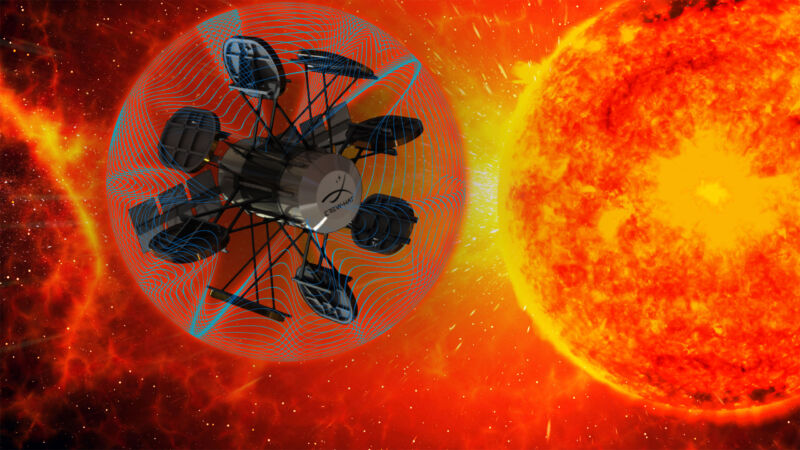Shields up: New ideas might make active shielding viable

Enlarge (credit: Aurich Lawson | Getty Images | NASA)
On October 19, 1989, at 12:29 UT, a monstrous X13 class solar flare triggered a geomagnetic storm so strong that auroras lit up the skies in Japan, America, Australia, and even Germany the following day. Had you been flying around the Moon at that time, you would have absorbed well over 6 Sieverts of radiation-a dose that would most likely kill you within a month or so.
This is why the Orion spacecraft that is supposed to take humans on a Moon fly-by mission this year has a heavily shielded storm shelter for the crew. But shelters like that aren't sufficient for a flight to Mars-Orion's shield is designed for a 30-day mission.
To obtain protection comparable to what we enjoy on Earth would require hundreds of tons of material, and that's simply not possible in orbit. The primary alternative-using active shields that deflect charged particles just like the Earth's magnetic field does-was first proposed in the 1960s. Today, we're finally close to making it work.